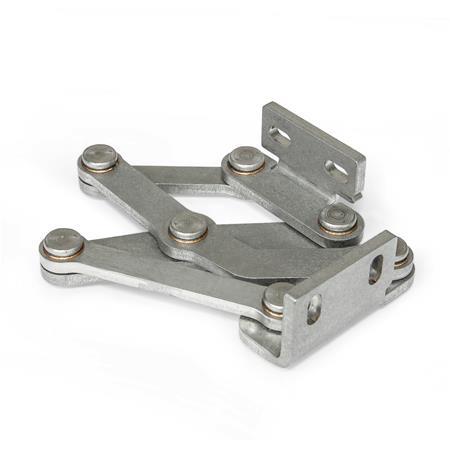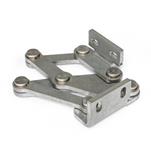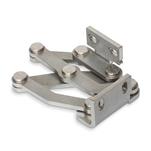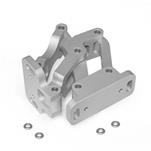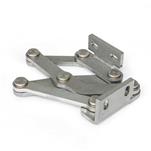Product description
Multiple-joint hinges GN 7233 are installed on the inside of flaps, hatches and doors to save space and ensure protection against vandalism. The hinges have a maximum opening angle of 120°, allowing for easy accessibility and making them suitable for use with medium-thick doors.
Use of this hinge type leaves housing exteriors free of attachments that do not match the design or that should be avoided entirely in the interests of fast and easy cleaning.
Multiple-joint hinges are generally used in pairs, meaning that one L type and one R type are used per opening. For higher loads, e.g. from large flaps or hatches, these can be supplemented with additional hinges of any type.
Specification
- Stainless steelNI AISI 304
Matte finish, tumbledMT
- Friction bearing
Bronze
Self lubricated
RoHS
Accessory
Spacer Plates GN 2370
Plates GN 2372 (with Tapped Holes)
Plates GN 2376 (mit Außengewinde)
On request
- Other materials
- Other finishes
- Other fixing angle pieces
- Other opening angles
- Other max. wall thicknesses
- Other lifting motion

